This article was co-authored by Carrie Noriega, MD. Dr. Noriega is a Board Certified Obstetrician & Gynecologist and medical writer in Colorado. She specializes in women’s health, rheumatology, pulmonology, infectious disease, and gastroenterology. She received her MD from the Creighton School of Medicine in Omaha, Nebraska and completed her residency at the University of Missouri - Kansas City in 2005.
There are 12 references cited in this article, which can be found at the bottom of the page.
wikiHow marks an article as reader-approved once it receives enough positive feedback. In this case, 85% of readers who voted found the article helpful, earning it our reader-approved status.
This article has been viewed 271,786 times.
Learning how to track your menstrual cycle can be important for many reasons. You will learn your natural "rhythm." The start of your period won't come as a surprise every month. You will know your approximate fertility (the days that you can most likely become pregnant). You will also get to know your natural emotional and physical fluctuations.
Steps
Monitoring Your Cycle
-
1Note of the first day of your period. The first day of your period is the day that you actually start to bleed. Your menstrual cycle runs from the first day of your period to the first day of your next period. The length of a menstrual cycle is different for each woman, but a typical cycle is between 21 and 35 days. Bleeding usually lasts for two to seven days.[1]
- Count the number of days between your periods and the number of days that you bleed.
- If you have started your period within the last two years, your cycle may be longer. Your cycle should become shorter and more regular the older you get. The length will also change when you are in perimenopause or close to menopause.
- The frequency and length of your menstrual cycle may also be altered by taking some forms of contraception (e.g. extended-cycle birth control pills).
- You typically ovulate between day 11 and day 21 of your cycle. This is the time of your cycle when you are most fertile and most likely to become pregnant if you have sex.[2]
-
2Keep track of your physical symptoms. Record the heaviness of your flow and any pain that you experience. Try to be as detailed as possible. In addition to keeping track of your physical symptoms, note the day of your cycle that you are experiencing them. For example, do you experience cramping a few days before your period starts?[3]
- How many pads or tampons did you use?
- Are you experiencing cramps? Are the cramps in your lower abdomen and/or your lower back?
- Are you experiencing any breast tenderness?
- How does your vaginal discharge change throughout your cycle?
- Do you experience diarrhea or loose stools during your period? (This is a common symptom.)
Advertisement -
3Pay attention to your emotions. Many women experience emotional changes as their hormones fluctuate. You may experience anxiety, a depressed mood, mood swings, irritability, appetite changes, or crying spells.[4] These symptoms typically occur before your period starts. Write down the day in your cycle that you experience any of these symptoms.
- Also note any other sources of stress that may be affecting your mood. This can help you determine if you are feeling anxious because your period is on the way or if your are anxious because of a project at work or school.
- If these symptoms appear around the same time each month, they are likely related to your cycle.
-
4Repeat this process every month. Track your cycle for a few months in a row to get an idea of what is normal for your body. You should begin to notice trends and similar physical and emotional symptoms each month. Note any changes that happen from month to month.[5]
- Some variation is normal. You may bleed for five days one month and three days the next.
- What is normal for you may not be normal for someone else.[6] Do not worry if your cycle is different than other women you know. Look for consistency within your own cycle.
- Keep in mind that if you are taking birth control pills, using a hormonal IUD, an implant, patch, or shots, then you will probably have a lighter period than when you did not take the birth control, but this is normal.
Using Different Tracking Devices
-
1Mark the days on a calendar. If you would like to track your period the old-fashioned way, obtain a calendar and mark the days with pencil, pen, marker, or highlighter. You may use different colors, symbols, or stickers to mark the beginning and end of your cycle, the length of your period, or the days you experience physical or emotional symptoms. Create a system that is clear and works for you.[7]
- If you do not want to overload your calendar with too much information, you can keep a separate journal for your physical and emotional symptoms and only use the calendar to mark the beginning and end of your cycle and period.
- If you don't use a calendar often, keep your calendar in a place you will remember it. Hanging the calendar in your bathroom or placing it next to a mirror may be helpful
- If you are a very private individual and don't like your period info out for the world to see, use a very discrete mark (e.g. an "x," circle, or color) signifying the event to you.
-
2Download an app on your phone. Instead of using pen and paper, you can use an app to track your period. These apps can keep all of your information at your fingertips and predict when your period will occur. In addition to having a calendar, many of these apps allow you to record physical and emotional changes that take place throughout your cycle.[8]
- Clue is a free app for iPhone and Android phones and is one of the most recommended apps. It allows you to record physical and emotional symptoms, the days you have sex, and create reminders to take your birth control pills. After entering a few months of data, the app will use algorithms to predict when your next period starts and when you are expected to ovulate.
- Period Tracker Lite is another free recommended period tracking app. This app allows you to use icons to describe your moods instead of typing out your symptoms. It is available for both iPhone and Android phones.
-
3Use an online calendar. If paper and pen or apps do not appeal to you, you can use an online tracker. These websites allow you to enter all of your cycle information and often have tools such as calendars, history reports, and reminders. Some of these websites also provide links to information about menstrual cycles.
- If internet access is an issue for you, you may not want rely on an online period tracker.
- Many of the sanitary product makers (e.g. Tampax, Always, etc.) have online tackers available through their websites.
Dealing with Period Problems
-
1Make adjustments based on your tracking information. You can use the information you have been tracking to make your life a little easier when you experience symptoms. If you know the days that you have cramps, the days that you are more irritable, or when your period is coming, you can adjust your life so that your cycle does not interfere.
- For example, if you know that you become bloated three days before your period, you can make sure that you avoid caffeine, salt and alcohol and drink plenty of water during this time period.[9]
- If you know that you are irritable during a certain time of your cycle, focus on getting enough sleep and practice some relaxation techniques so your irritability does not get the best of you.
-
2Manage an irregular period. Up to 14% of women have irregular menstrual cycles.[10] If your period arrives early or late, if you have excessive bleeding or barely bleed, or experience severe pain, you may have an irregular period. An irregular period should be easy to identify if you have been tracking your cycle.
-
3Know when to see a doctor. Menstrual irregularities are common. If you notice any changes or have some questions, see your health care provider. Take all of the information that you have been tracking with you. This can help your health care provider figure out what is going on with your body. You should always see a professional if you experience any of the following:[14]
- You bleed for more than seven days.
- You are bleeding in between your periods.
- Your periods are less than 21 days apart or more than 35 days apart.
- Your periods went from being regular to being irregular.
- You soak through more than one tampon or pad every hour or two.
- Your periods become very heavy or painful.
Menstrual Cycle Tracker
Expert Q&A
-
QuestionIs it normal for the cramps to stop?
 Carrie Noriega, MDDr. Noriega is a Board Certified Obstetrician & Gynecologist and medical writer in Colorado. She specializes in women’s health, rheumatology, pulmonology, infectious disease, and gastroenterology. She received her MD from the Creighton School of Medicine in Omaha, Nebraska and completed her residency at the University of Missouri - Kansas City in 2005.
Carrie Noriega, MDDr. Noriega is a Board Certified Obstetrician & Gynecologist and medical writer in Colorado. She specializes in women’s health, rheumatology, pulmonology, infectious disease, and gastroenterology. She received her MD from the Creighton School of Medicine in Omaha, Nebraska and completed her residency at the University of Missouri - Kansas City in 2005.
Board Certified Obstetrician & Gynecologist Some women will have cramps with their menstrual bleeding while others will never have a single cramp their entire life. Each period can also be different for women with some months having no cramps and other months having a lot of cramping. This is all considered normal. When you should see a doctor is if you start having severe cramps with every period that make it so you can't do your regular activities or if you start having very heavy bleeding.
Some women will have cramps with their menstrual bleeding while others will never have a single cramp their entire life. Each period can also be different for women with some months having no cramps and other months having a lot of cramping. This is all considered normal. When you should see a doctor is if you start having severe cramps with every period that make it so you can't do your regular activities or if you start having very heavy bleeding. -
QuestionMy period averages seven days. How many days after my period will I ovulate?
 Carrie Noriega, MDDr. Noriega is a Board Certified Obstetrician & Gynecologist and medical writer in Colorado. She specializes in women’s health, rheumatology, pulmonology, infectious disease, and gastroenterology. She received her MD from the Creighton School of Medicine in Omaha, Nebraska and completed her residency at the University of Missouri - Kansas City in 2005.
Carrie Noriega, MDDr. Noriega is a Board Certified Obstetrician & Gynecologist and medical writer in Colorado. She specializes in women’s health, rheumatology, pulmonology, infectious disease, and gastroenterology. She received her MD from the Creighton School of Medicine in Omaha, Nebraska and completed her residency at the University of Missouri - Kansas City in 2005.
Board Certified Obstetrician & Gynecologist The timing of ovulation is related to the length of your entire cycle and not just to the length of bleeding. You usually ovulate 14 days before you start your period. This means that if your cycle is 30 days from the first day you start bleeding to the day before you start your next period then you will ovulate on the 16th day of your cycle or 16 days after the first day you start bleeding. Someone who has a 29 day cycle will ovulate on the 15th day from the first day you start bleeding, etc.
The timing of ovulation is related to the length of your entire cycle and not just to the length of bleeding. You usually ovulate 14 days before you start your period. This means that if your cycle is 30 days from the first day you start bleeding to the day before you start your next period then you will ovulate on the 16th day of your cycle or 16 days after the first day you start bleeding. Someone who has a 29 day cycle will ovulate on the 15th day from the first day you start bleeding, etc.
References
- ↑ http://www.mayoclinic.org/healthy-lifestyle/womens-health/in-depth/menstrual-cycle/art-20047186
- ↑ https://www.mayoclinic.org/healthy-lifestyle/getting-pregnant/expert-answers/ovulation-signs/faq-20058000
- ↑ https://www.womenshealth.gov/menstrual-cycle/your-menstrual-cycle
- ↑ https://www.mayoclinic.org/diseases-conditions/premenstrual-syndrome/symptoms-causes/syc-20376780
- ↑ https://www.womenshealth.gov/menstrual-cycle/your-menstrual-cycle
- ↑ http://www.mayoclinic.org/menstrual-cycle/ART-20047186?p=1
- ↑ https://www.plannedparenthood.org/learn/birth-control/fertility-awareness/whats-calendar-method-fams
- ↑ https://www.plannedparenthood.org/learn/birth-control/fertility-awareness/whats-calendar-method-fams
- ↑ https://www.nlm.nih.gov/medlineplus/premenstrualsyndrome.html
- ↑ https://www.nichd.nih.gov/health/topics/menstruation/conditioninfo/Pages/irregularities.aspx
- ↑ http://www.nhs.uk/Conditions/Periods-irregular/Pages/Treatment.aspx
- ↑ https://www.nichd.nih.gov/health/topics/menstruation/conditioninfo/Pages/causes.aspx
- ↑ https://www.nichd.nih.gov/health/topics/menstruation/conditioninfo/Pages/treatments.aspx
- ↑ http://www.mayoclinic.org/healthy-lifestyle/womens-health/in-depth/menstrual-cycle/art-20047186?pg=2
About This Article
By tracking your menstrual cycle, you’ll always know when your time of the month is coming. Your menstrual cycle runs from the first day of your period when you start bleeding to the first day of your next period. Record the first day of your period on a calendar or use an app like Clue or Period Tracker. You can also write down your physical symptoms on the calendar or app each month so you’ll know roughly when to expect things like cramps and headaches. Some variation in your menstrual cycle is perfectly normal, but over the months, you’ll start to see patterns emerging. For more tips from our Medical co-author, including how to deal with physical period symptoms, read on.
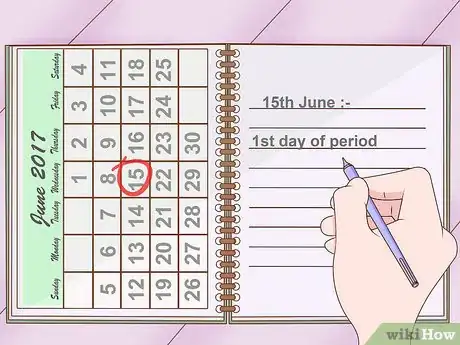


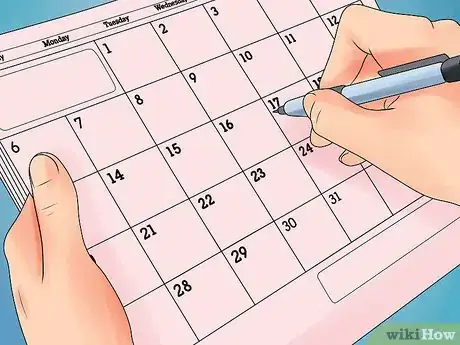
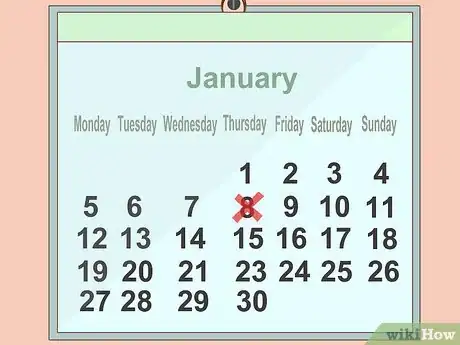


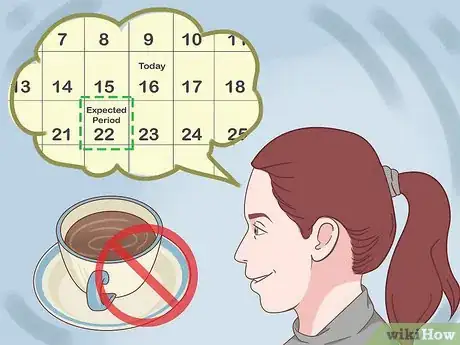


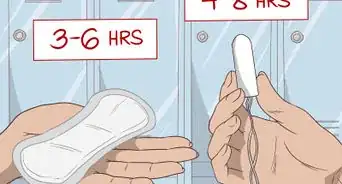
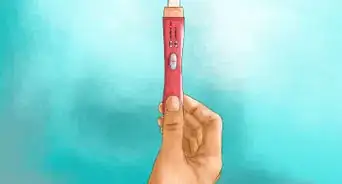





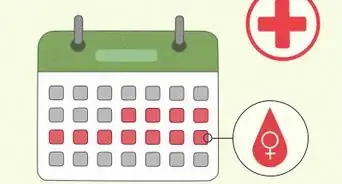
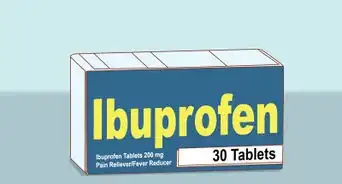


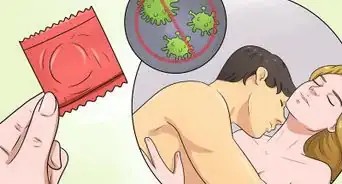












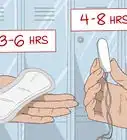






































Medical Disclaimer
The content of this article is not intended to be a substitute for professional medical advice, examination, diagnosis, or treatment. You should always contact your doctor or other qualified healthcare professional before starting, changing, or stopping any kind of health treatment.
Read More...